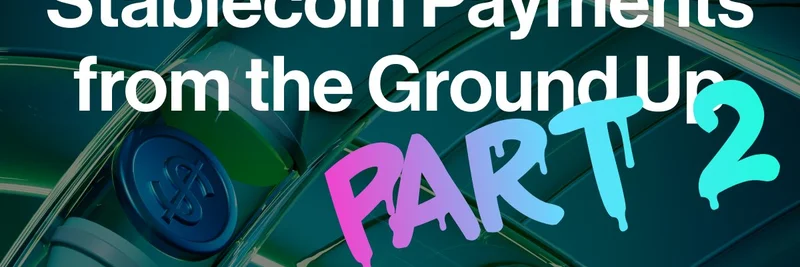In a recent episode of Rollup TV on October 24, 2025, host Robbie dove into the freshly released Part 2 of the Artemis Stablecoin Payments Report. Shared via a tweet from @therollupco, the segment highlights a "Cambrian explosion" of stablecoins hitting the market, positioning them as key players in facilitating payments. For those in the meme token space, this is big news—stablecoins like USDT and USDC are the backbone for trading and liquidity in meme ecosystems, making cross-border transactions seamless and cost-effective.
Stablecoins are digital assets pegged to stable fiat currencies, like the US dollar, ensuring minimal volatility. They're essential for meme token enthusiasts who often pair them with volatile assets for trading on decentralized exchanges (DEXs).
The report, co-authored by Artemis with Castle Island Ventures and Dragonfly, updates data through August 2025. It shows stablecoin payments soaring to $10.2 billion monthly, a 70% jump from February's $6.0 billion and a whopping 137% increase from August 2024. Annualized, that's a $122 billion run rate. Since 2023, over $136 billion in payments have been settled using stablecoins.
Breaking it down, business-to-business (B2B) transactions are leading the charge, growing 113% to $6.4 billion per month and accounting for nearly two-thirds of all volume. Consumer-facing channels aren't far behind: card payments up 36%, business-to-consumer (B2C) up 32%, prefunding up 61%, while person-to-person (P2P) holds steady at $1.6 billion.
On the issuer side, Tether (USDT) still reigns supreme with a 79% market share, but Circle's USDC is closing the gap, rising from 14% to 21% since February. This shift could mean more options for meme token liquidity pools, as USDC's compliance focus appeals to institutional players entering the space.
Network-wise, Tron leads with 48% of global flows, but Ethereum is gaining traction with an 11% increase. For meme tokens, which often launch on Ethereum or Solana, this network diversity enhances interoperability and reduces fees, boosting community-driven projects.
Geographically, the US (18.7%) and Singapore (18.4%) dominate, followed by Hong Kong (9.8%), Japan (8%), and the UK (6.8%). This global spread underscores stablecoins' role in democratizing finance, allowing meme token creators and holders worldwide to participate without traditional banking hurdles.
The report shouts out data partners like Binance, Bybit, and others, emphasizing the collaborative effort behind these insights. Compared to Visa's $13.2 trillion volume, stablecoins are at 0.9% but growing nearly 10x faster year-over-year. As Robbie put it on Rollup TV, "Stablecoins are here and they're capitalizing on the opportunity to facilitate payments."
For the meme token community, this growth signals more efficient trading environments. With lower fees and faster settlements, stablecoins enable pump-and-dump dynamics, airdrops, and community funding in ways traditional finance can't match. As new stablecoins emerge, expect innovative integrations with meme projects, perhaps even meme-branded stables.
To dive deeper, check out the full report at stablecoin.fyi or watch the Rollup TV clip embedded in the original tweet. Stay tuned to Meme Insider for more on how blockchain trends like this shape the meme token landscape.



